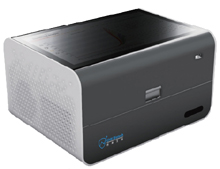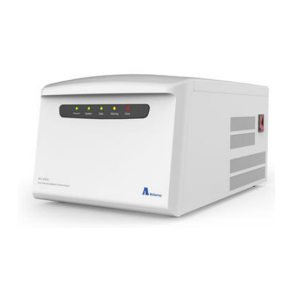-

CHK-800 Automatic nucleic acid extractor
The information in this color page includes descriptions of both general technical specifications and system configurations, as well as descriptions of standard and selective configurations, and we do not warrant that selective configurations will be included in any product offering; -

Real time fluorescent quantitative PCR system
Q9600 is a real-time PCR instrument designed for scientific research and medical users. It's a 96well with 6 fluorescence channels and 6 partition temperature control methods ensure the excellent performance of the instrument. Compatible with PCR tube, 8-well strip tubes and 96-well plates; -

CHK-16A Automatic Nucleic Acid Extraction System
Chuangkun Biotech’s CHK-16A is a high-quality fully automatic nucleic acid extraction-system, small in size, and can be placed on a clean bench or in a mobile testing vehicle; it can be driven by an external battery for on-site testing; -

POCT-Automatic Molecular Diagnostic PCR System
The iNAT-POC molecular POCT diagnostic system is based on fluorescence quantitative PCR technology and is a fully automated integrated molecular POCT detection system that integrates fully automated nucleic acid extraction technology and fluorescence quantitative PCR technology. -

MQ96 /MQ48 qPCR Instrument Flyer
1.Efficient and fast: fast: 25 minutes to complete a round of testing; 2.Multiple items test: 3 chambers can simultaneously test multiple groups of samples independently to achieve multiple purposes test; 3.Flexible programs: simultaneous comparative test of -

Thunder Q16 qPCR Introduction
1.Fast detection speed:Nucleic acid detection can be completed in 25 minutes. 2.Touch screen and easy operation:With 28cm big touch screen, easy to operation and analyze the result. 3.Light weight and easy to move: Only 2.6kg, easy to carry, suitable for POCT,biological safety cabinets -

CHK-3200 Automatic Nucleic Acid Extractor
1.Can finish 32 samples extraction within 10~25min(related to reagents), save time. 2.Suitable for DNA and RNA extraction, and get high quality nucleic acid to be used in subsequent PCR, RT-PCR or NGS test. 3.Good repeatability and stability, avoid the errors by manual extraction method. -

MA-6000 Real Time PCR System
Based on the development and promotion of PCR for many years, combined with the optimization of innovative hardware, structure and software, Molarray has launched a new real-time fluorescence quantitative PCR system- MA-6000. -

MICROBIAL AEROSOL SAMPLER
Concentrate into small volume samples on site to improve monitoring sensitivity. Effective collection of microbial toxins, viruses, bacteria, molds, pollen, spores, etc. Using culture and molecular biology detection methods to effectively detect the collected microbial aerosols -

Model UF-150 Ultra-Fast Real-time PCR System
GENECHECKER adopted special polymer chip (Rapi:chipTM) which enables even faster thermal treatment of samples in it than the case of using PCR tubes for conventional PCR Instruments. 8°C/sec ramping rate can be achieved -

MA-688 real-time PCR System
MA-688 Real-Time Quantitative Thermal Cycler adopts maintance-free LED as the excitation light source, which is operated by external computer, with high efficiency and convenience, and can be widely used in basic medical research, pathogen detection, molecular cloning, genetic screening, gene expres -

UF-300 Real-time PCR System Flyer v1.0
Long turn around time of PCR test and its bulky and heavy instrumentation have been the key factors limiting the spread of this highly precise and sensitive detection method in point-of-care diagnostic applications.

 中文
中文